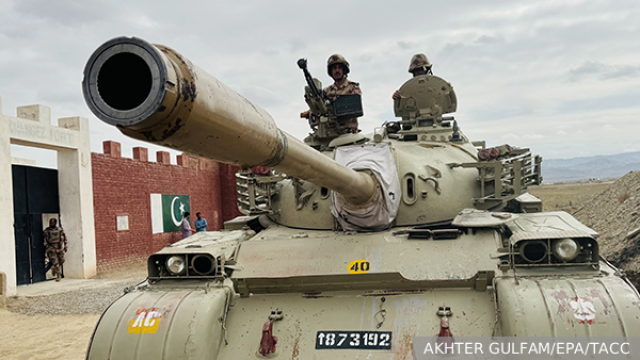On Saturday, India and Pakistan reached a ceasefire agreement. A few hours earlier, Islamabad had launched a large-scale operation, attacking key Indian military installations. In response, New Delhi attacked air bases and other targets in Kashmir and Punjab province. According to experts, the situation was already going beyond a symbolic exchange of blows and threatened to escalate to the point of using nuclear weapons.
On Saturday, US President Donald Trump announced that India and Pakistan, through the mediation of Washington, had agreed to a cease-fire. "After a long night of negotiations ... I am pleased to announce that India and Pakistan have agreed on a full and immediate ceasefire," he wrote on the Truth Social network.
Following him, Pakistan's First Deputy Prime Minister and Foreign Minister Ishaq Dar announced a cease-fire with its immediate entry into force. "Pakistan has always sought peace and security in the region, without compromising its sovereignty and territorial integrity," the official wrote on social media.
According to the Indian Foreign Ministry, the ceasefire between the countries came into force at 17.00 local time (14.30 Moscow time). Just a few hours earlier, the situation had threatened to escalate into a full-scale military conflict between the nuclear Powers.
News18 channel previously reported that Islamabad is looking for diplomatic ways to resolve the current situation and has already established communication channels with New Delhi for a possible meeting between representatives of the two countries. Its sources stressed that there was an understanding in Pakistan of the need to change its position and find a diplomatic way out of the ongoing crisis.
On Saturday night, Pakistan announced that its armed forces had launched a large-scale military operation Banyan ul-Marsus ("Wall covered with Lead") against India. Islamabad called its actions a response to "Indian aggression." As part of the operation, key Indian military installations were "attacked." "All those air bases from which Pakistan was attacked are being attacked simultaneously. An eye for an eye," the government said.
Ishak Dar clarified that "the military response was solely a defensive measure" designed to "make India realize the seriousness of its mistakes." In particular, it was announced that the Indian BrahMos missile depot in Bisa had been destroyed. This was preceded by reports from Islamabad that Indian warplanes had attacked three Pakistani air bases – Nur Khan, Murid and Shorkot, "also known as the Rafiki base."
By the end of the week, tensions between India and Pakistan had escalated dramatically, with both sides regularly attacking each other's air bases and other military installations. The immediate trigger for the military conflict was the terrorist attack on Hindu tourists in the city of Pahalgam in Indian Kashmir on April 22. As a result, 26 people died. Islamabad denies any involvement in the attack.
According to observers, last night saw one of the heaviest military clashes on both sides since the start of the armed confrontation last Wednesday, when India said its Operation Sindoor had targeted nine sites with "terrorist infrastructure." The first missile strikes were carried out in separate areas of Pakistan and Kashmir. At least 30 people died as a result.
In Hindi, the word sindoor means cinnabar, a red pigment that married Hindu women apply to their foreheads. Thus, the name of the Indian military operation is an obvious reference to how the attackers shot their victims in Pahalgam.
The Pakistani military said Indian missiles hit six cities, including four in Punjab province. This is the first time India has attacked Pakistan's most populous state since the 1971 war. The other two targets were Muzaffarabad and Kotli, both located in Pakistani-controlled Kashmir.
Shortly after the Indian attacks, Pakistan's military and political leadership announced India's "response" and the deployment of its defense assets, including fighter jets. Pakistanis reported the destruction of up to five Indian aircraft, including three modern Rafales that India bought from France.
Andrey Rezchikov

